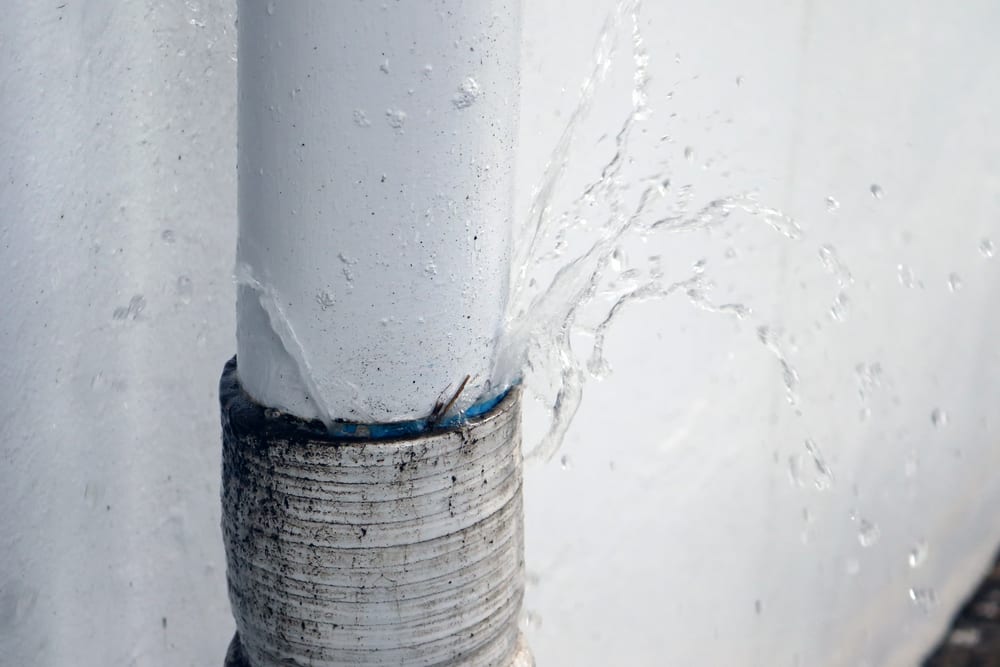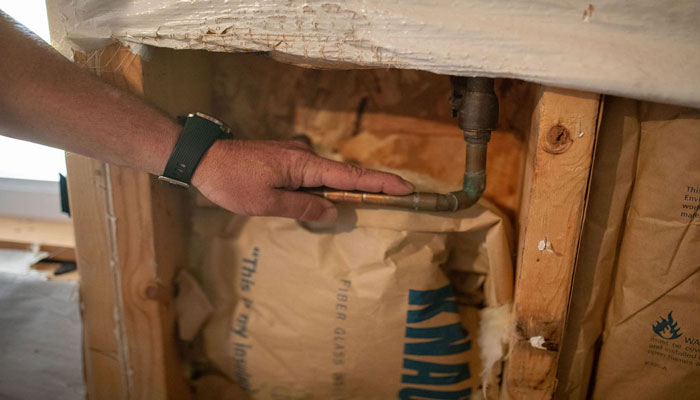Stop the Flood: Strategies for Detecting as well as Repairing Burst Pipes
Stop the Flood: Strategies for Detecting as well as Repairing Burst Pipes
Blog Article
This article following next pertaining to How to Install and Connect a New Dishwasher is exceedingly informative. Give it a try and make your own personal results.

A ruptured pipe is a significant emergency; you can only stand as you watch water you pay a lot to rejoin with the earth. In worse instances, you observe a pool on your kitchen flooring, which is a terrific journey danger, especially if you have youngsters around. If the pipe that burst remained in your wall surfaces, bad news: you might require to repaint that whole area.
How can a calamity like a ruptured pipe be stopped and taken care of? Well, by listening to your specialist emergency plumbings and also following these policies.
How do I understand when my pipes have ruptured?
Fluctuating water pressures
Pipelines do not just burst in a day. You might have noticed that your kitchen area tap or shower doesn't run immediately when you turn the tap. It may stop briefly for a couple of seconds and after that blast you with even more force than common.
In other circumstances, the water may appear typical in the beginning, then decrease in pressure after a couple of seconds.
Damp walls as well as water stains
Prior to a pipe bursts, it will certainly leak, the majority of times. If this consistent dripping goes unnoticed, the leakage may graduate right into a broad wound in your pipe. One very easy way to avoid this emergency is to keep an eye out for wet wall surfaces ad water spots. These water spots will certainly lead you right to the leak.
Puddles under pipelines and sinks
When a pipe ruptureds, the outflow develops a pool. It may appear that the pool is growing in size, and also no matter the number of times you wipe the puddle, in a few mins, there's another one waiting to be cleaned up. Commonly, you may not be able to map the pool to any visible pipelines. This is an indicator to call a professional plumber.
Untraceable leaking sounds
Pipe bursts can occur in one of the most unpleasant places, like within concrete, inside wall surfaces, or under sinks. When your house goes quiet, you may be able to listen to an aggravatingly persistent leaking sound. Also after you have actually checked your shower head and kitchen area faucet, the trickling might continue.
Dear reader, the trickling might be coming from a pipe inside your walls. There isn't much you can do concerning that, except tell a professional plumber.
Shut off the Water
When water ices up, it broadens in quantity by about 9 percent. And also it broadens with remarkable force: The pressure inside pipes may go from 40 extra pounds per square inch to 40,000 psi! No pipe can hold that much pressure, so it breaks open. The break may occur where the ice forms, but more frequently, it happens where water stress finds a vulnerable point in the pipeline. That may be inches or perhaps feet from the icy area. Find the water shutoff valve and turn off the water to prevent even more damage. You could likewise require to turn off the electricity as well, depending on where the leaks occurs as well as exactly how huge it is.
Polluted water
Lots of people presume a burst pipe is a one-way outlet. Quite the contrary. As water flows out of the hole or gash in your plumbing system, contaminants find their method.
Your water might be infected from the resource, so if you can, inspect if your water storage tank has any problems. However, if your alcohol consumption water is provided as well as cleansed by the city government, you should call your plumber instantly if you see or smell anything amusing in your water.
What do I do when I identify a burst pipeline?
Your water meter will certainly continue to run even while your water wastes. To decrease your losses, locate the primary controls as well as turn the supply off. The water mains are an above-ground framework at the edge of your home.
How to Fix & Detect a Leaking Pipe
How Do I Know if a Pipe is Leaking?
Leak detection tests can help you determine if your pipe has a leak. Even if you don’t see an apparent leak, you should still conduct leak detection tests regularly to save water and money—and prevent major damage to your home.
Water meter. It can be helpful to figure out what your usual water meter usage numbers are and then monitor them regularly. To monitor your meter, first, turn off all water faucets in your home. Check the meter and write down the numbers. In a few hours, check the meter again. If the numbers have changed, you have a leak. Water gauge. Use a water gauge to test your water pressure. Your showerhead should produce a certain amount of water pressure based on its model and design. If the pressure is lower than it is supposed to be for that specific showerhead, your home likely has a leak. Puddles. Look inside your bathroom, laundry, and kitchen sink cabinets. Puddles around the cabinets or around toilets, tubs, showers, and washing machines indicate the presence of a leaking pipe. You may also notice loose tiles, peeling or flaking paint, or mold caused by water accumulation. Napkin test. Even if you don’t see any puddles, you may still have a leak. You can test for water leaks in the bathroom, laundry, and kitchen by wiping below-sink connections with a napkin, paper towel, or piece of toilet paper. If it becomes damp, you probably have a leaking pipe under the sink. Discolored walls. Walls that are discolored—usually with brown or yellow stains—or bulging might mean that they have been impacted by water damage caused by a leaking pipe. Smell. A leaky pipe will create sitting water, and over time, that water may develop a musty smell. If your home smells musty, but you can’t locate the source, it may be due to a leak. Steps for Fixing a Leaking Pipe
A leaky drain can be remedied by tightening the pipe base, replacing the drain seal, caulking the rim, and tightening the pipe nut. Similarly, a leaking toilet pipe can be treated by tightening the packing nut. You may also need to replace the valve. A leaky faucet may just need tightening or replacement of the washers. If that doesn’t work, consider replacing your faucet. If your pipe has a hole in it, you may want to use a pipe leak sealer or pipe leak tape. This quick fix for water pipe leaks can also temporarily fix a copper pipe leak. https://www.ahs.com/home-matters/quick-tips/how-to-tell-if-pipes-are-leaking/

As a fervent reader about How to Install and Connect a New Dishwasher, I figured sharing that piece of content was worthwhile. Do you know someone else who is fascinated with What to Know Before Installing a Dishwasher? Take a moment to promote it. Kudos for your time. Come back soon.
Estimate
Report this page